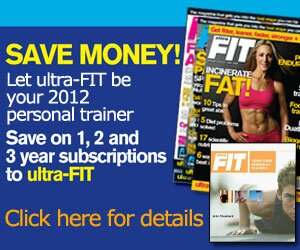Our body has around 850 muscles, of which around 430 are ‘voluntary’ muscles i.e. ones that we consciously move (as opposed to involuntary muscles, such as the heart which functions automatically).
How muscles work
Muscles consist of thousands of fibres, which are made from 2 proteins called ‘actin’ and ‘myosin’. Actin and myosin make up units called ‘sarcomeres’ – the smallest contractile elements of a muscle. The actin filaments (which are thin) and myosin filaments (which are thick) slide past each other to produce muscle contractions (this is called the ‘sliding filament theory’). The neural system produces the electrical spark to fire them up and then a chemical reaction takes places to fuel the contractions.
Muscles can generate force in three ways:
1) Concentric muscular action
These occur when a muscle shortens under load. The lifting phase of the biceps curl is a typical example. Concentric muscular actions are the most common in sport and fitness activities.
2) Eccentric muscular action
These occur when a muscles lengthens under load, for example the lowering phase of the biceps curl. These actions are important when developing muscular strength and force (research indicates that more fast twitch muscle fibre is recruited during eccentric contractions).
3) Isometric muscular action
It could be argued that there is ‘no action’ during an isometric contraction – but there is. These occur in opposing muscle groups as they push against each other i.e. there is tension but no joint movement, as in a static wall squat.
Interestingly we are weakest concentrically, stronger eccentrically and strongest isometrically, so it’s possible that although you could no longer lift a weight concentrically you would still be able to lower it. In resistance training negative (eccentric) lifts take advantage of this phenomenon and are great for making strength gains.
Muscle Names – it’s all Greek (and a bit of Latin) to me
Do you know your gluteus maximus from your gastrocnemius? The often-tricky sounding muscle names derive from their characteristics and are based on either Greek or Latin. For example, the tongue twister flexor digitorum longus is a long muscle that flexes your finger.
Muscle size e.g. Gluteus Maximus – the largest muscle in the body
Muscle location e.g. Tibialis Anterior – the muscle on the front of the shin
Muscle shape e.g. Deltoids – the triangular muscles that cap the shoulder
Muscle action e.g. Extensor Digitorum – the muscles that extend the fingers
Number of muscle attachment sites e.g. Biceps Brachii – the biceps of the upper arm has two attachment sites
Muscle fibre direction – e.g. Rectus Abdominis (Abs) – rectus means ‘to run vertically’
The Role of Muscles in Movement
When we perform an exercise in the gym it’s likely that we are doing so for a specific purpose, for example performing the squat to strengthen our quadriceps (the muscle at the front of the thigh). However, in reality no one muscle works alone and every movement is the result of a number of actions occurring simultaneously. The muscles doing most of the work are called ‘agonists’. Whilst ‘antagonists’ are the muscles on the opposite side of the same joint which relax to allow movement to occur (a process called ‘reciprocal Inhibition’). Whilst ‘synergists’ are secondary muscles that stabilise our joints to prevent unwanted movement.
Exercise and the Muscular System
If we live a sedentary lifestyle (or do lots of aerobic exercise) it’s likely that we will lose some muscle tissue (called ‘atrophy’). However, with regular training – our muscles will respond by adapting to the stresses put upon them. For resistance training they will get bigger (called hypertrophy), get stronger and gain power. And for aerobic training they will increase endurance, store more fuelling carbohydrate (glycogen), develop more/bigger energy-producing cells called ‘mitochondria’ and oxygen carrying highways capillaries.
Popularity: 3% [?]















